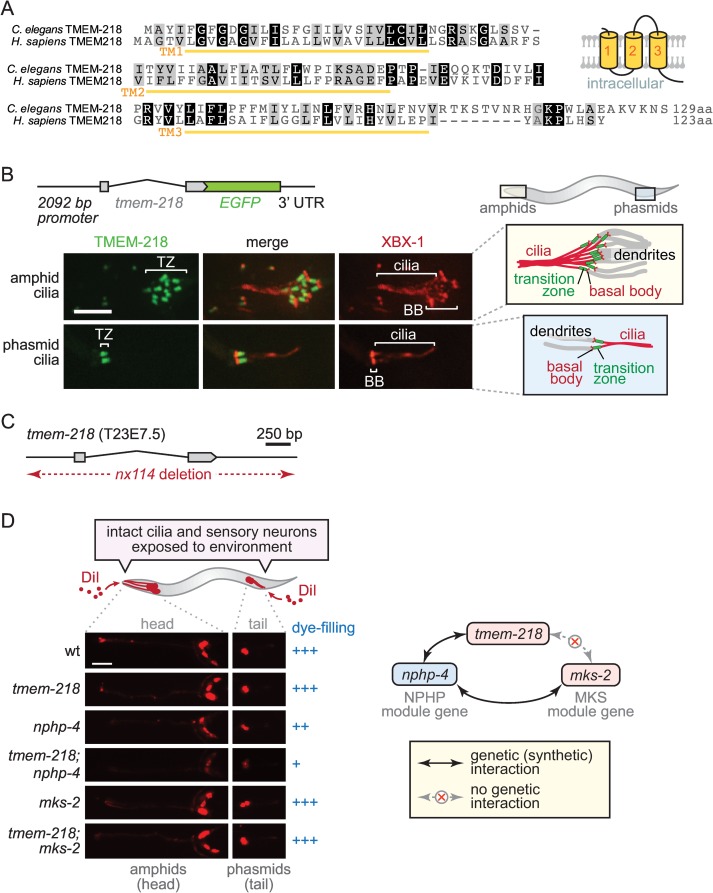Fig 1. C. elegans tmem-218 encodes a novel transition zone protein and genetically interacts with nphp-4 but not mks-2, consistent with it being part of the Meckel syndrome (MKS) module.
(A) Amino acid sequence alignment of C. elegans TMEM-218 and its Homo sapiens orthologue. Both proteins are predicted to encode proteins with three transmembrane domains (TM1-3), with the predicted topology shown schematically. (B) C. elegans tmem-218 (T23E7.5) is expressed specifically in ciliated sensory neurons and its encoded product (TMEM-218) tagged with green fluorescent protein (GFP; green) localises to the ciliary transition zone (TZ) at amphid (head) and phasmid (tail) cilia found at the distal ends of dendrites. The tdTomato-tagged intraflagellar transport (IFT) protein XBX-1 (red) marks basal bodies (BB) and ciliary axonemes. Scale bar, 4 μm. (C) The tmem-218(nx114) mutant allele used in this study, generated using transposon-mediated mutagenesis, represents a complete and specific deletion of the tmem-218 gene. (D) Dye-filling assay schematic shows the fluorescent dye DiI (red) penetrating sensory neurons via structurally intact, environmentally exposed ciliated endings. Dye-filling of the tmem-218 and nphp-4 strains is normal (+++) or slightly reduced (++), respectively, whereas dye-filling of the tmem-218;nphp-4 double mutant is mostly disrupted (+). A lack of genetic (synthetic) interaction between tmem-218 and mks-2 is also consistent with TMEM-218 belonging to the MKS module (as depicted schematically). Scale bar, 40 μm.

